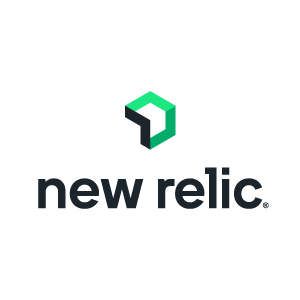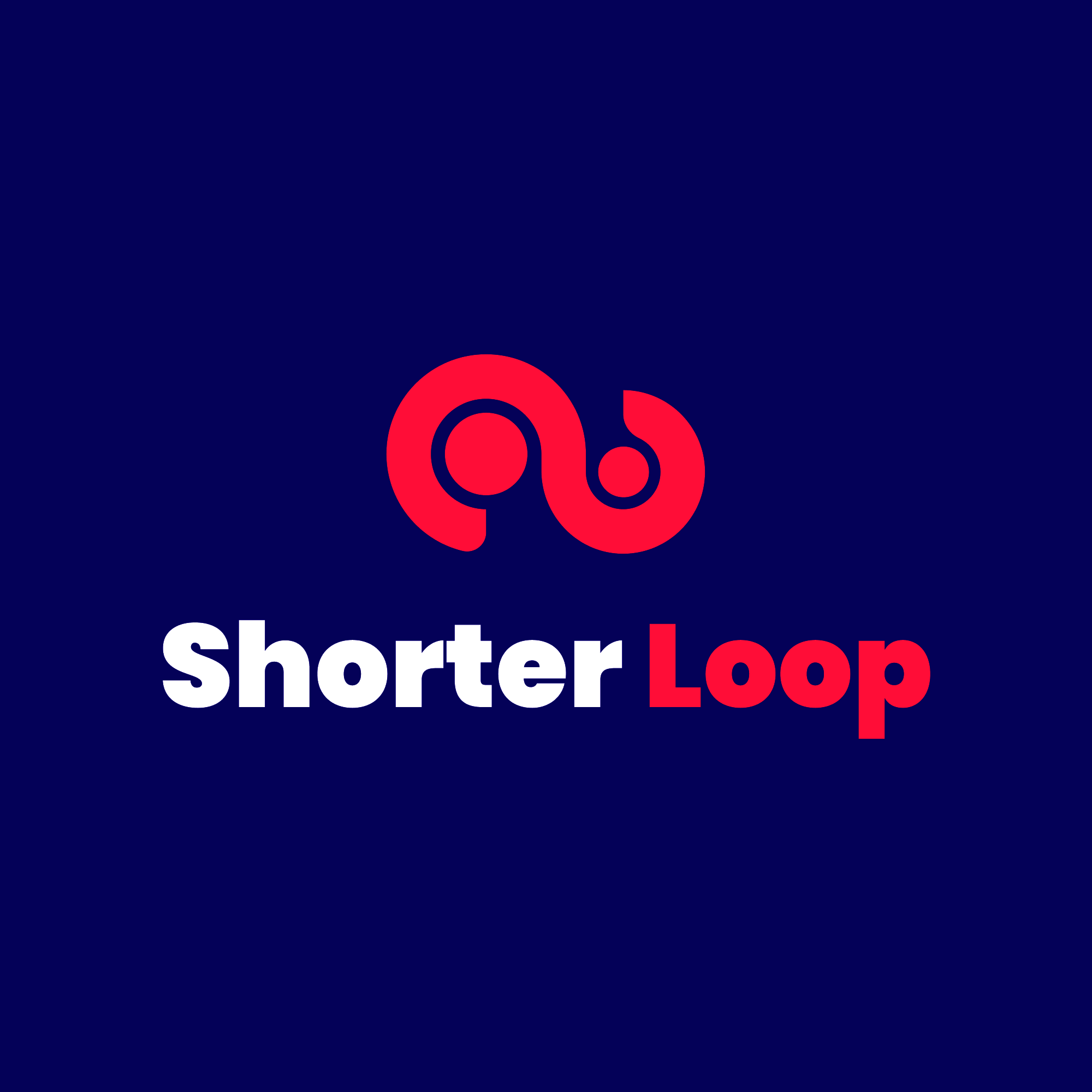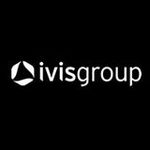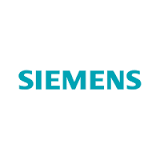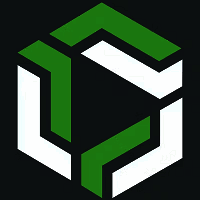Yes, PLM software can be accessed via numerous devices and platforms, making it more convenient and adaptable for users. Users can access the program from any device with a stable internet connection, including PCs, laptops, tablets, and smartphones. This enables smooth communication and real-time updates no matter the user's device or location. PLM software is also compatible with a variety of operating systems, including Windows, Mac, and Linux, making it available to a broad spectrum of users.
List of 20 Best PLM Software
SLIM Suite is a project management software solution. With access to a robust database of over 14,000 validated projects, SLIM Suite streamlines estimation, tracking, and metric analysis for your business. Empower your team to make data-driven decisi...Read More SLIM Suite
Proplanner is a leading process engineering and MES software customized for assembly manufacturing. It includes an array of functionalities such as process planning, time studies, work instructions, line balancing, and advanced scheduling to boost ef...Read More Proplanner
Delogue PLM is a cloud-based solution, catered to the fashion, eyewear, interior, jewelry, and lifestyle sectors. It offers a comprehensive platform to effortlessly manage product data and development processes. This user-friendly software optimizes...Read More Delogue PLM
Knyo, a cloud-based PLM software that simplifies and streamlines product development, no matter how complex. Say goodbye to tedious processes and hello to significant time savings throughout the entire product lifecycle. With innovative features, Kny...Read More Knyo
3 Clicks Cloud is a Product Lifecycle Management software tailored for the Fashion, Accessories, Home Goods, and Footwear sectors. Our platform simplifies and optimizes the entire production journey, from concept to distribution, enabling seamless ha...Read More 3 Clicks Cloud
Essembi is a Software Innovation Hub. Our platform provides a range of cutting-edge features to help you create high-quality software in no time. With our advanced customization options, you can personalize Essembi to suit your unique requirements. T...Read More Essembi
Cosmetri is a software solution designed for the cosmetics and personal care industry by Cosmetri GmbH. Our comprehensive software, developed in Germany, caters to businesses of all sizes around the world. With user-friendly features, Cosmetri simpli...Read More Cosmetri
Surefront is product collaboration platform that streamlines omni-channel sales, merchandising, and product development. By combining PIM, CRM, and PLM solutions, Surefront enhances productivity and drives business growth. With our innovative tools,...Read More Surefront
New Relic is a APM monitoring software designed for software developers and IT professionals. Its comprehensive features include memory and CPU optimization, code profiling, database query performance, web browser rendering analysis, and error tracki...Read More New Relic
ApparelMagic - the leading ERP software tailored for the specific needs of small to medium-sized businesses. Our Windows-compatible online system provides essential tools such as Catalog Management, Billing & Invoicing, Order Management, Purchasing,...Read More ApparelMagic
Exenta is a leading software provider for the apparel industry, offering comprehensive ERP, PLM, and SFC solutions. Dedicated to delivering cutting-edge technology and exceptional customer service, Exenta enables businesses to streamline supply chain...Read More Exenta
Shorter Loop is a platform for product management. With Shorter Loop, you can effortlessly discover the best solutions and generate practical strategies to delight your clients. This results in improved customer satisfaction and higher willingness to...Read More Shorter Loop
Pivotal Tracker is renowned project management software utilized by many to streamline and enhance their project management workflow. This impressive tool promotes improved organization, ultimately saving time and promoting better coordination to ele...Read More Pivotal Tracker
Sonetto is a top-performing project management tool designed to streamline project management processes. Its intuitive task tracking, seamless collaboration, and robust reporting capabilities make it the go-to choice for teams aiming to boost product...Read More Sonetto
Aha!, the top-ranked product lifecycle management software, streamlines your workflow with its intuitive drag and drop interface and real-time data updates. Monitor project status with detailed tracking, and achieve faster time-to-market, improved pr...Read More Aha!
Siemens PLM Software is a premier provider of innovative product lifecycle management (PLM) and manufacturing operations management (MOM) solutions. Our robust PLM platform seamlessly connects and streamlines data, processes, and teams across the ent...Read More Siemens PLM
Canny - the best customer feedback solution for teams. Easily collect, evaluate, and prioritize valuable user insights with our robust platform, enabling you to deliver outstanding products that resonate with your customers. Trusted by renowned corpo...Read More Canny
BlueCielo is a reliable engineering document management solution designed to enhance collaboration, simplify version control, and enhance data security. With its user-friendly interface, teams can efficiently access and manage critical documents, inc...Read More BlueCielo
Vision PLM is a PLM solution for retail and sourcing companies. Our advanced software streamlines new style development, eliminating the need for manual work. With its user-friendly interface and precise data, Vision PLM helps you stay informed and t...Read More Vision PLM
Arena PLM is a product lifecycle management solution that simplifies the process of managing products for businesses. With its cloud-based platform, organizations can effortlessly collaborate on product design, production, and enhancement. By providi...Read More Arena PLM
Learn More About PLM Software
- What Is PLM Software?
- What Are The Recent Trends In PLM Software?
- Benefits Of Using PLM Software
- Important Factors To Consider While Purchasing PLM Software?
- What Are The Key Features To Look For In PLM Software?
- Why Do Businesses Need PLM Software?
- How Much Time Is Required To Implement PLM Software?
- What Is The Level Of Customization Available In PLM Software?
- Which Industries Can Benefit The Most From PLM Software?
- Conclusion
What Is PLM Software?
PLM (Product Lifecycle Management) software is a sophisticated tool that helps firms manage, track, and improve a product's whole lifecycle, from conception to retirement. It is a comprehensive platform that allows businesses to improve their product development processes and effectively manage products and associated data. At its core, PLM software serves as a single repository for all product-related information, such as design files, bills of materials, supplier information, customer feedback, and other critical information.
This enables smooth collaboration between multiple teams and departments, ensuring that everyone has access to the most up-to-date and correct information. However, PLM software provides more than just data management capabilities. It also includes additional tools for decision-making and optimization, such as version control, product analytics, and interaction with other corporate systems.
This leads to increased visibility, efficiency, and productivity throughout the product development process. One of the primary advantages of PLM software is its ability to efficiently handle product modifications and revisions. Businesses can use a centralized system to track product changes, analyze their impact, and make quick, educated decisions. This also aids in identifying and resolving problems early on, lowering the likelihood of errors and delays.
Furthermore, PLM software has extensive collaboration tools, allowing teams to collaborate in real time, independent of their location. This improves communication, reduces silos, and allows for smoother cross-functional operations. Businesses can use its cloud-based features to access and work on product data remotely, increasing flexibility and scalability.
When choosing PLM software, you should analyze your company's specific needs and if the platform can meet them. Look for a system with customizable settings, flexibility for future development, and an easy-to-use interface. It should also work flawlessly with the other software and systems utilized by your firm.
What Are The Recent Trends In PLM Software?
PLM (Product Lifecycle Management) software is continually improving to meet the changing requirements of enterprises across industries. As technology evolves and global marketplaces grow more competitive, businesses seek ways to shorten their product development processes and increase productivity.
Let's explore, we'll go over the latest developments in PLM software that purchasers should be aware of when making a purchase.
1. Cloud-Based Solutions: Cloud-based PLM solutions have gained popularity in recent years because to their flexibility, scalability, and affordability. With the advent of remote and distributed teams, cloud-based PLM enables seamless collaboration and access to real-time data from anywhere in the world. It also eliminates the need for expensive IT infrastructure and upkeep, making it an attractive option for small and medium-sized organizations.
2. Integration With Other Systems: As product development becomes more complicated, PLM software integrates with other systems such as ERP, CAD, and CRM to provide a comprehensive view of the product lifecycle. This connection improves data management and cooperation across departments, resulting in better decision-making and faster time-to-market.
3. Focus On User Experience: User experience has been an important consideration in the design of PLM software. Vendors are investing in designing intuitive and user-friendly interfaces to help non-technical people navigate the program. Furthermore, mobile applications are gaining popularity, allowing users to access PLM data on the go, increasing productivity and efficiency.
4. AI & Machine Learning: The application of AI and machine learning in PLM software is growing, notably in industries like automotive, aerospace, and consumer goods. These technologies aid in the automation of operations such as product design and quality control, resulting in enhanced accuracy while saving time and money.
5. Focus On Sustainability: Sustainability is becoming a primary focus for both businesses and consumers. As a result, PLM software now incorporates functionality for tracking and managing a product's environmental impact across its entire lifecycle. This enables businesses to make more sustainable decisions while both complying with rules and consumer demands.
6. Move Towards SaaS Models: Software-as-a-Service (SaaS) models are gaining traction in the PLM sector, offering buyers a cost-effective and hassle-free option. SaaS allows buyers to acquire software through a subscription model, reducing the need for upfront fees. It also ensures that customers always have access to the most recent upgrades and features.
Benefits Of Using PLM Software
PLM (Product Lifecycle Management) software is a powerful technology that can transform how firms manage the product development process. It provides a variety of advantages that can assist enhance productivity, streamline processes, and eventually increase profitability.
If you are a business owner, you should consider the following important benefits of adopting PLM software:
1. Efficient Product Development Procedure: One of the most significant advantages of adopting PLM software is that it streamlines the entire product development cycle. PLM integrates all stages of the product lifecycle, from ideation to launch, into a unified platform. This eliminates the need for several systems, spreadsheets, and manual processes, saving both time and effort.
2. Enhanced Teamwork And Communication: PLM software enables collaboration and communication among team members, departments, and even external partners and suppliers. This increases transparency and guarantees that everyone is working towards the same goal. Real-time access to project information allows teams to collaborate more efficiently and effectively, decreasing the likelihood of errors and delays.
3. Enhanced Data Management: PLM software acts as a centralized store for all product-related data, including as design files, specifications, bill of materials (BOMs), and other vital information. This provides data consistency and accuracy, avoiding version control difficulties that can come with manual data management. It also offers a secure platform for data storage, reducing the likelihood of data loss or theft.
4. Faster Time To Market: PLM software accelerates product development by streamlining processes and improving cooperation. This can provide a competitive advantage, especially in fast-paced businesses where time-to-market is critical. PLM also allows organizations to quickly adjust to market changes and consumer needs, keeping them ahead of the competition.
5. Cost Savings Implementing: PLM software can lead to significant cost reductions for enterprises. Businesses can save time and money by automating manual processes, eliminating errors and rework, and lowering the need for physical prototypes. PLM software can also help find potential cost savings by improving supply chain management, identifying process improvement opportunities, and minimizing waste.
6. Improved Product Quality: PLM software allows organizations to keep control of product quality throughout the whole development process. Businesses can avoid product failures or recalls by offering a platform for rigorous testing, prototyping, and simulation.
Important Factors To Consider While Purchasing PLM Software?
When choosing PLM (Product Lifecycle Management) software, customers should examine a number of crucial considerations. PLM software is a key tool for managing a product's whole lifecycle, from conception to retirement, and selecting the correct software is critical for a smooth and efficient workflow.
Let's explore, we'll go over the essential variables to consider while assessing PLM software solutions.
1. Features And functionalities: The first and most significant consideration is the features and functionalities provided by the PLM software. Make a list of your unique requirements and check that the software you select includes all of the capabilities required to satisfy your business demands. Product data management, bill of materials (BOM) management, change management, and communication tools are some of the most important elements to consider.
2. Scalability And flexibility: Your PLM software should be able to develop alongside your organization. Consider whether the program is scalable and can handle increased product complexity and volume. It should also be adaptable enough to handle changes in your business procedures without generating disruptions.
3. Integration Capabilities: PLM software should serve as a central repository for all product-related data, and it must work seamlessly with other systems such as ERP, CAD, and CRM. This enables a steady flow of data while reducing the possibility of errors and duplicate work.
4. User-Friendliness And Training Requirements: Because user acceptance is critical to the success of PLM software, the program must be user-friendly and simple to operate. Consider whether the program requires substantial training or has an easy-to-use interface that your team can rapidly adapt to.
5. Vendor Support And Reputation: Before acquiring PLM software, examine the vendor's reputation and the amount of assistance it offers. It is also important to check whether the seller provides regular updates and upgrades to keep the program up to date.
6. Cost: PLM software may be a big investment for any firm, so it's important to understand the overall cost of ownership. In addition to the original purchase price, consider recurring costs such as maintenance, support, and training. Consider the software's potential ROI in terms of enhanced productivity and cost savings.
7. Customization And Future-Proofing: Because each organization has distinct procedures and requirements, it is critical to determine whether the PLM software enables for customization to match your individual demands. Furthermore, with technology constantly growing, it is critical to select PLM software that is future-proof and adaptable to new technologies and processes.
What Are The Key Features To Look For In PLM Software?
PLM software, or Product Lifecycle Management software, is a critical tool for companies trying to streamline their product development and management operations. With so many options available on the market, it can be difficult for consumers to navigate and select the best PLM software for their needs.
Let's explore, we'll go over the important characteristics to look for when comparing various PLM software solutions.
1. Centralized Product Data Management: One of the key purposes of PLM software is to centralize all product-related data, such as design, engineering, manufacturing, and marketing information. This feature enables simple access and cooperation among many teams and departments, thereby increasing productivity and reducing errors.
2. Integration Capabilities: PLM software should be able to interact with other critical business systems, such as ERP and CRM, to ensure a continuous flow of data and prevent duplication of work. It can also work with third-party apps to do specific tasks, such as computer-aided design (CAD) software for product design.
3. Version Control And Traceability: With several teams and departments working on different components of a product, version control and traceability are critical features in PLM software. This tool allows you to track changes made by different team members and keeps a full audit trail to ensure accountability and transparency.
4. Collaboration And Workflow Management: Effective cooperation and workflow management are critical to effective product development. PLM software should include capabilities like as task assignment, progress tracking, and communication tools to help teams and individuals collaborate more effectively.
5. Bill Of Materials Management: The BOM is an important document that lists all of the components and materials needed to produce a product. PLM software should provide functions for organizing and tracking BOMs, such as creating and modifying them, adding alternative parts, and managing changes.
6. Change Management: Change is a constant in the product development process, hence PLM software should have strong change management features. This functionality allows businesses to easily track, authorize, and apply changes to a product and its associated data.
7. Quality Management: Ensuring product quality is critical to consumer happiness and retention. Look for PLM software that has quality management capabilities like quality control, inspections, and audits to maintain the highest level of product quality.
8. Mobile Compatibility: In today's fast-paced corporate world, having instant access to information is critical. Look for PLM software that works with mobile devices, allowing team members to access and work on product data from anywhere and at any time.
Why Do Businesses Need PLM Software?
PLM software, or Product Lifecycle Management software, is a critical tool for firms who want to optimize their product development process and remain competitive in today's fast-paced industry. From inception to retirement, PLM software assists firms in managing every stage of a product's lifespan, assuring efficiency, cost effectiveness, and quality control. One important reason why firms want PLM software is to centralize information and facilitate cooperation.
PLM software stores all product-related data, such as design files, bills of materials, and supplier information, in a centralized system that is available to all stakeholders. This removes the need for multiple software applications and manual spreadsheets, lowering the risk of misunderstanding and data inaccuracies. PLM software enables smooth cooperation between departments by providing real-time updates and version control, ensuring that everyone is working with accurate and up-to-date information.
Another key advantage of PLM software is its ability to streamline the product development process. PLM software helps firms create an efficient workflow by automating mundane processes and increasing productivity. PLM software, with capabilities like as project management, task assignment, and deadline tracking, puts all team members on the same page, reducing delays and errors.
This streamlined workflow also results in a shorter time-to-market, giving enterprises a competitive advantage and allowing them to meet customer demands. Furthermore, PLM software provides useful insights and analytics to aid decision-making. PLM software delivers precise information on product performance by recording every stage of its lifecycle, including feedback, revisions, and expenses.This data helps to find areas for improvement, streamline operations, and make educated decisions about future products.
Finally, one major advantage of PLM software is its capacity to ensure compliance and quality control. Businesses must follow tight laws and quality requirements, especially in fields such as medical, aerospace, and defense. PLM software enables firms to organize and track compliance documentation, certifications, and audits, thereby avoiding costly errors and penalties. This ensures product quality and safety, hence increasing customer trust and loyalty.
How Much Time Is Required To Implement PLM Software?
The time required to implement PLM software varies substantially based on several factors, including the software's complexity, the size of the company, and the extent of customization necessary. However, on average, a PLM software deployment can take between 6 months and 2 years. Before getting into the timeline, it's vital to understand the various stages of PLM software implementation.
Planning, data migration, implementation, training, and testing are common steps in the process. The planning step can take between one and three months, while data migration can take two to four months. The implementation step is the most time-consuming, taking anywhere from 6 to 12 months depending on the software's complexity and the organization's preparedness to change.
Training and testing can take another 3-6 months. To achieve a successful and timely deployment, a company should have a committed staff to oversee the process. This team should include key stakeholders from multiple departments, such as IT, engineering, and procurement, who will be utilizing the PLM software. They should be involved throughout the implementation process to guarantee that the software fits the organization's requirements.
Other elements that can influence the timeline of a PLM software deployment include the extent of customization required, system integration, and resource availability. Customization might cause delays in adoption since it necessitates extensive testing and approval from the program provider. Integration with other systems, such as ERP or CRM, can also cause a delay because it requires synchronizing data and procedures across many systems.
In addition to the time and money required for implementation, it is critical to account for training and change management. Implementing new software can be a huge adjustment for employees, so it is critical to give them with adequate training and assistance to ensure a smooth transition.
What Is The Level Of Customization Available In PLM Software?
PLM (Product Lifecycle Management) software is a comprehensive technology that allows businesses to manage their product development processes from inception to retirement. One of the most important elements to consider when choosing PLM software is the extent of customisation. This refers to the degree to which software may be customized to match the specific demands and operations of a given firm.
In this buyer's guide, we'll look at the level of customization available in PLM software and why it's a vital aspect to consider. First and foremost, it is critical to recognize that different PLM software systems provide varying degrees of customization. Some may be more adaptable and allow for greater customisation, but others may have restrictions in this regard.
If customisation is vital for your business, you must conduct extensive study and comparisons of several PLM software choices to determine which one best meets your requirements. The level of customisation offered in PLM software is divided into two categories: configuration and customization. Configuration refers to the capacity to change the settings and parameters of software without modifying its code.
Customization, on the other hand, entails modifying the software's source code or introducing new features and capabilities. Most PLM software solutions provide a high level of customization, allowing businesses to adjust the program to their own procedures and workflow. This can entail altering user interfaces, developing bespoke data fields and forms, and establishing distinct approval processes.
Customization options, however, may differ based on the software. Some PLM solutions provide a robust customization toolbox, allowing businesses to completely modify the program to their requirements. This might be advantageous for businesses with complex operations or specific business needs. Other applications may offer fewer customization choices or require additional coding abilities to make changes.
When determining the extent of customization in PLM software, it is critical to evaluate the vendor's support and training options. To utilize and maintain a highly configurable software, your team may need more knowledge or more training.
Which Industries Can Benefit The Most From PLM Software?
PLM (Product Lifecycle Management) Software is a powerful tool that helps streamline and manage the entire product lifecycle, from conception to retirement. Its benefits are not limited to a specific industry; rather, it can be utilized by a diverse range of industries to enhance their operational efficiency, reduce costs, and ultimately drive revenue growth. However, some industries can reap the most significant rewards from utilizing PLM software. In this section, we will highlight the industries that can benefit the most from PLM software, allowing you to make an informed decision when considering a PLM solution for your business.
1. Manufacturing Industry: The manufacturing industry can significantly benefit from PLM software. It aids in tracking and managing various stages of manufacturing, including design, prototyping, production, and distribution. PLM software helps manufacturers streamline their processes, reduce development costs, and bring products to the market faster. Furthermore, it also provides real-time visibility into supply chain and production data, enabling manufacturers to make informed decisions and proactively address any issues that may arise.
2. Retail Industry: The retail industry can gain substantial benefits from PLM software, especially in the fast-paced and highly competitive market. PLM software can aid retailers in managing multiple product lines, creating faster and more efficient workflows, and significantly reducing time-to-market. By centralizing product data and automating manual tasks, PLM software helps retailers improve collaboration, achieve cost efficiencies, and deliver high-quality products to their customers.
3. Consumer Goods Industry: In the consumer goods industry, where brands are continuously launching new products and facing competition from multiple players, PLM software can be a game-changer. It helps companies manage product data, streamline processes, optimize product development and launch, and enhance collaboration among cross-functional teams. By using PLM software, consumer goods companies can bring innovative products to the market quickly, maintain brand consistency, and gain a competitive edge.
4. Healthcare Industry: PLM software is gradually gaining popularity in the healthcare industry, mainly due to the increasing complexity of medical devices and the need for strict compliance with regulations. PLM software helps healthcare companies manage product specifications, collaborate with suppliers, and maintain quality standards throughout the product lifecycle. It aids in improving efficiency, reducing time-to-market, and meeting regulatory compliance, which is crucial in the highly regulated healthcare industry.
5. Aerospace And Defense Industry: PLM software can play a vital role in the aerospace and defense industry, where precision, compliance, and quality are of utmost importance. By providing a single source of truth for all product data, PLM software can help aerospace and defense companies manage complex BOMs, collaborate with cross-functional teams, and ensure the highest level of quality and safety for their products. Additionally, by automating manual processes, PLM software can help companies achieve cost efficiencies and bring innovative products to the market faster.
Conclusion
Finally, investing in PLM software can significantly increase your organization's efficiency, collaboration, and creativity. By optimizing procedures, centralizing data, and offering real-time insights, PLM software enables firms to remain ahead of competitors and react to dynamically changing markets. However, before deciding on a PLM software that best meets your demands, you need thoroughly analyze your individual business requirements and undertake extensive research.
With the correct PLM software in place, you can boost productivity, cut expenses, and expedite the product development process. We hope this buyer's guide has offered useful information and helped you make an informed decision about which PLM software is best for your company.
PLM Software FAQ's
Can PLM Software Be Accessed Across Multiple Devices And Platforms?
Is PLM Software Future-Proof And Adaptable To Emerging Technologies Like AI, Blockchain Or IoT?
Yes, PLM software is intended to be future-proof and adaptable to new technologies like AI, blockchain, and IoT. With the steady innovation and incorporation of new technologies, PLM software vendors must constantly update their systems to remain relevant and deliver value to their customers. This ensures that firms may use the most recent technologies to expedite their product development processes and stay ahead of the competition in an ever-changing industry.
Is There A Free Trial Offered To Assess PLM Software Before Committing?
Yes, many PLM software companies provide free trials so that businesses can evaluate the product before purchasing. This enables businesses to completely examine the software's features and functionalities, determining whether it suits their specific needs and requirements. The free trial period varies each supplier, but it normally lasts 14 to 30 days. It is recommended that you take advantage of these free trials before making a decision to invest in PLM software.
Does PLM Software Offer Data Security Features And Meet Regulatory Compliance Standards?
Yes, PLM software includes comprehensive data security capabilities to secure and maintain the confidentiality of critical product data. It follows several regulatory compliance standards, such as ISO 27001 and GDPR, to suit the data protection needs of diverse businesses. PLM software incorporates security measures including as access controls, encryption, and data backup to protect against cyber attacks and breaches. Furthermore, it assists businesses in complying with industry-specific laws such as FDA, RoHS, and REACH.
Can PLM Software Integrate Seamlessly With Existing Tools And Platforms?
Yes, most current PLM software is intended to work smoothly with existing tools and platforms. This provides for a more efficient workflow and reduces the need for data duplication. APIs and other connectivity mechanisms enable PLM software to interface with multiple systems such as enterprise resource planning (ERP), customer relationship management (CRM), and product design software to ensure a smooth interchange of information. This improves collaboration and efficiency in the product development process.









